Sudan: A year of defiance
For over a year now, Sudanese people have endured life under a military coup that stripped the country of a potential transition to democratic, civilian rule. Throughout this period, these same people have organised over 100 days of national protests to demand civilian rule –a major protest every five days for a year.
In over 54 towns across the country, millions of Sudanese have participated in demonstrations since the military coup took place on 25 October 2021, constituting one of the world’s longest and largest protest movements.
This movement appears set to continue despite efforts by military and security units to crack down on the demonstrations, often using excessive force against protestors, including firing live bullets and tear gas. In every demonstration, security forces have injured and sometimes killed protestors, averaging 19 injuries per day for a year. During this same period, security forces have, on average, killed a protestor every third day.
To monitor and commemorate the sacrifices made by civilians in Sudan’s protest movement, Ayin is pleased to launch an upgraded version of the Sudan Protest Monitor.
 On 30 October 2021, just five days after the coup, the Sudan Protest Monitor (SPM) was launched using open-source data to record and map Sudan’s protests. The SPM highlights when and where the most active demonstrations have taken place and the levels of violence used to quell these protests by utilizing visual data created by citizens across the country.
On 30 October 2021, just five days after the coup, the Sudan Protest Monitor (SPM) was launched using open-source data to record and map Sudan’s protests. The SPM highlights when and where the most active demonstrations have taken place and the levels of violence used to quell these protests by utilizing visual data created by citizens across the country.
In a bid to look back and commemorate this long, often tumultuous year of national protests striving for democratic rule below marks some of the milestones made by the protest movement from 25 October 2021 – 25 October 2022.
A Year of Protests: Top Ten Milestones
2021:
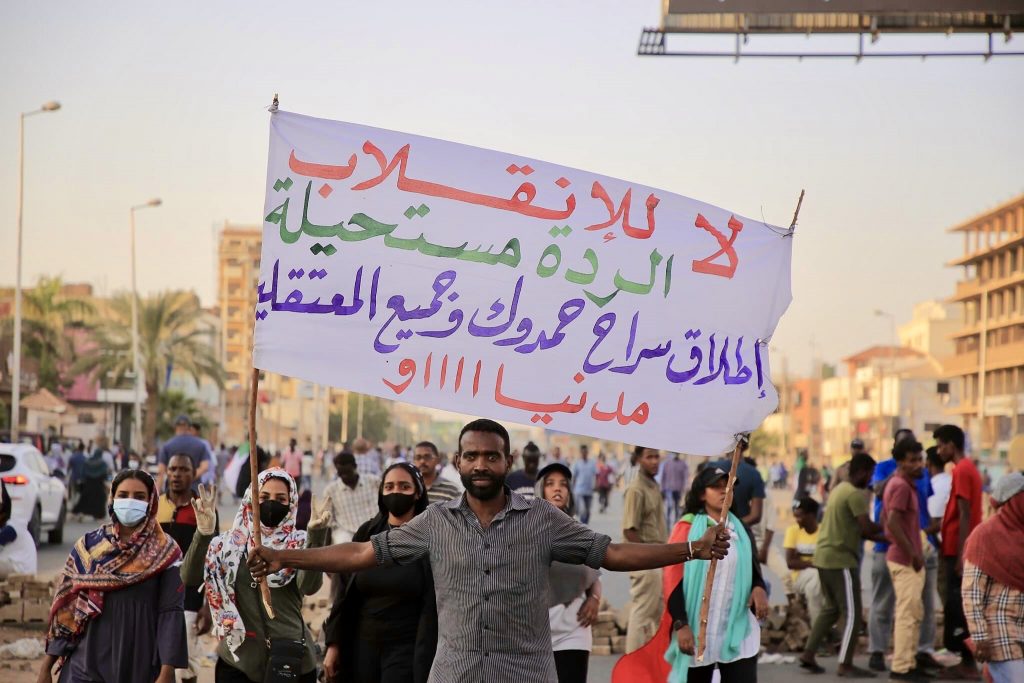 October 30: “Military for the barracks” Just days after the coup, Sudanese bravely took to the streets amidst a heavy presence of security forces that killed four protestors in Omdurman and injured 117 people. Resistance committees, civilian-led bodies that have organised the protests, managed to coordinate the mass protest across 20 towns, despite a nearly month-long Internet blackout designed to curtail communication and coordination among the protest groups. According to one resistance committee leader from Khartoum, it was the first collective protest they organised and emboldened many of the anti-coup movement to the idea that the coup would eventually fall with sustained action. The huge turnout of protestors called for the military to end the coup and “return to the barracks.”
October 30: “Military for the barracks” Just days after the coup, Sudanese bravely took to the streets amidst a heavy presence of security forces that killed four protestors in Omdurman and injured 117 people. Resistance committees, civilian-led bodies that have organised the protests, managed to coordinate the mass protest across 20 towns, despite a nearly month-long Internet blackout designed to curtail communication and coordination among the protest groups. According to one resistance committee leader from Khartoum, it was the first collective protest they organised and emboldened many of the anti-coup movement to the idea that the coup would eventually fall with sustained action. The huge turnout of protestors called for the military to end the coup and “return to the barracks.”
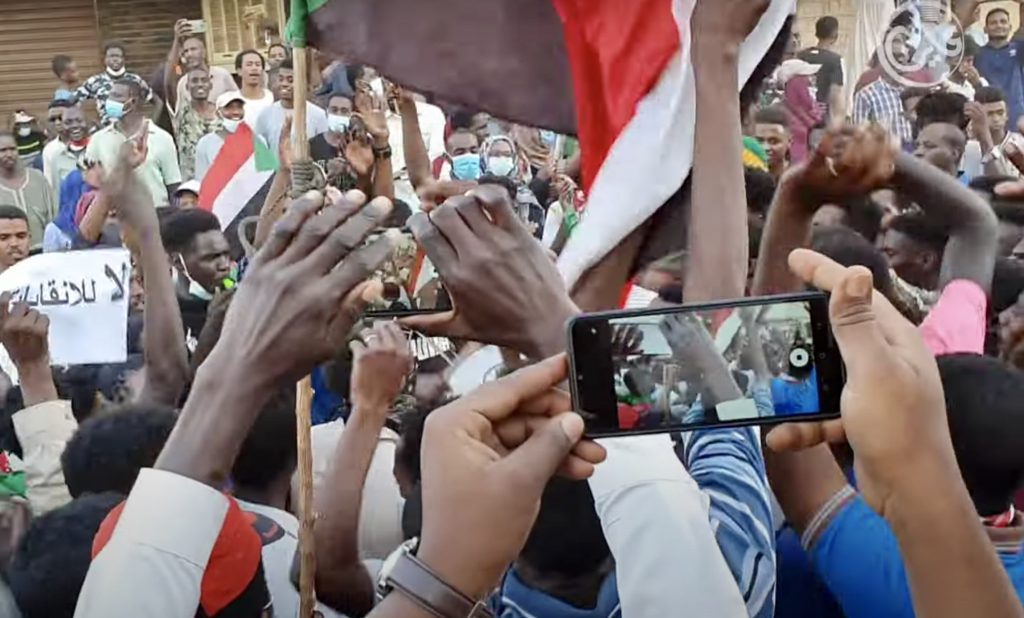 November 17: “The Bahri Massacre” This protest marks a tragic day for the pro-democracy movement, the protest is often referred to as the “Bahri Massacre”, in which suspected security forces killed 14 protestors, 11 of them in Bahri, North Khartoum. Mothers who had lost their sons and daughters to previous demonstrations also joined the large processions in the capital. An estimated 107 protestors were injured, with the majority, 77 cases, taking place in Bahri. The Central Reserve Police Forces were particularly singled out for their use of live bullets to disperse the protestors. “It was a difficult day and remains in our memory,” one resistance committee member said. These violations took place while an Internet blackout remained in place since the coup’s inception on October 25, 2021.
November 17: “The Bahri Massacre” This protest marks a tragic day for the pro-democracy movement, the protest is often referred to as the “Bahri Massacre”, in which suspected security forces killed 14 protestors, 11 of them in Bahri, North Khartoum. Mothers who had lost their sons and daughters to previous demonstrations also joined the large processions in the capital. An estimated 107 protestors were injured, with the majority, 77 cases, taking place in Bahri. The Central Reserve Police Forces were particularly singled out for their use of live bullets to disperse the protestors. “It was a difficult day and remains in our memory,” one resistance committee member said. These violations took place while an Internet blackout remained in place since the coup’s inception on October 25, 2021.
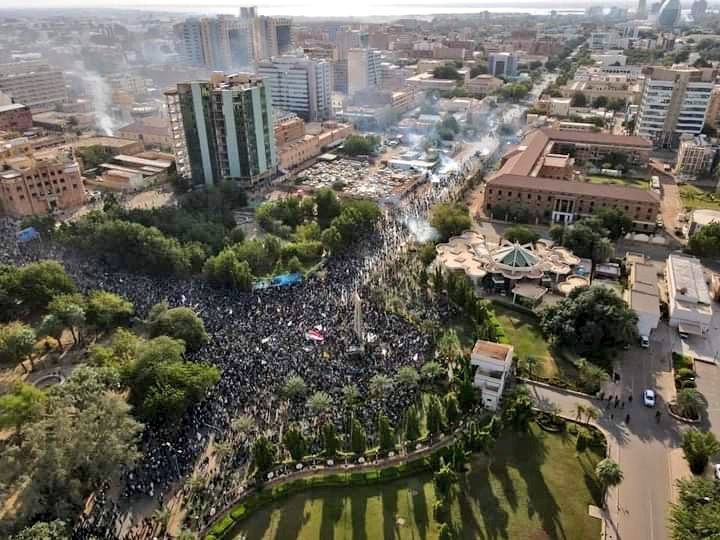 December 19: “Palace Gates” For the first time, some of the protestors managed to reach the Republican Palace. Perhaps remembering the former 2019 revolution, whereby protestors managed a sit-in near the palace, security forces were determined to dispel the protestors at any cost. “The security services were afraid that the resistance committees would stage a sit-in in front of the palace,” says Jabra Resistance Committee Leader Shahinaz Jamal. The security forces started firing bullets and tear gas canisters indiscriminately, Jamal said, forcing the protestors to flee in a stampede. Several sources also claim security forces sexually assaulted some of the protestors. The repressive tactics used by the security forces killed three protestors in the capital area and led to 331 injuries. The 19 December protest had countrywide participation with protests taking place in 32 different towns across the country, especially the Darfur region.
December 19: “Palace Gates” For the first time, some of the protestors managed to reach the Republican Palace. Perhaps remembering the former 2019 revolution, whereby protestors managed a sit-in near the palace, security forces were determined to dispel the protestors at any cost. “The security services were afraid that the resistance committees would stage a sit-in in front of the palace,” says Jabra Resistance Committee Leader Shahinaz Jamal. The security forces started firing bullets and tear gas canisters indiscriminately, Jamal said, forcing the protestors to flee in a stampede. Several sources also claim security forces sexually assaulted some of the protestors. The repressive tactics used by the security forces killed three protestors in the capital area and led to 331 injuries. The 19 December protest had countrywide participation with protests taking place in 32 different towns across the country, especially the Darfur region.
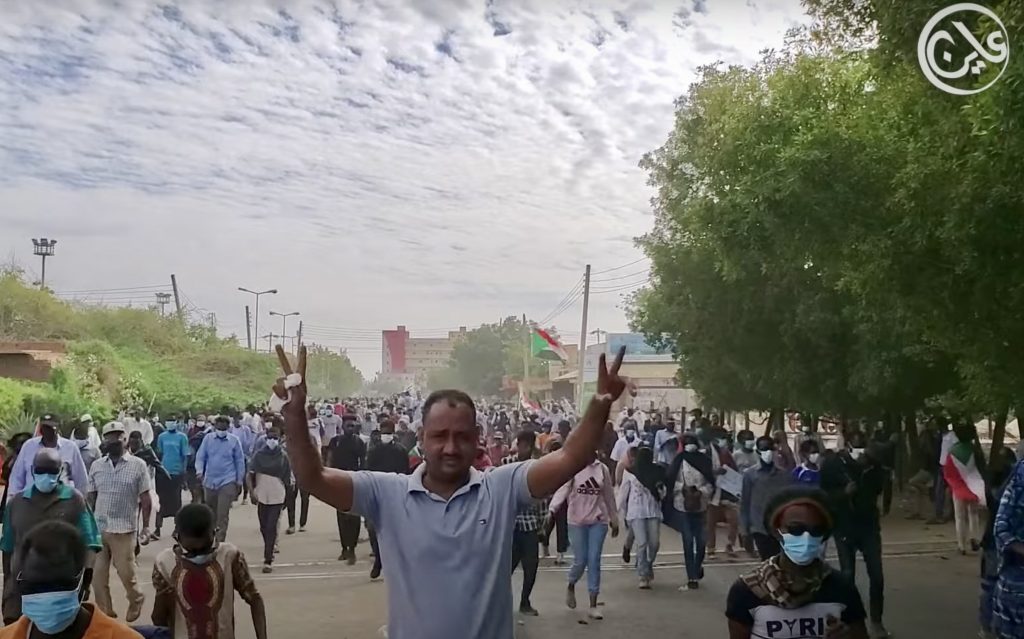 December 25: “Breaking Through” For the second time, protestors managed to reach the Republican Palace, breaking the security cordon that surrounded bridges connected to the palace. The army and Central Reserve Police managed to disperse the second attempted sit-in in front of the palace. Nevertheless, protestors consider reaching the palace a significant feat since authorities had issued another Internet blackout to curb communication and coordination among the resistance committees. Perhaps wary of the protest movement’s ability to reach the palace, ruling council head Lt-Gen Abdel Fattah al-Burhan announced a state of emergency across the country, providing security forces sweeping powers and immunities to curb the protests. According to resistance committee members, authorities arrested 50 protestors on this day.
December 25: “Breaking Through” For the second time, protestors managed to reach the Republican Palace, breaking the security cordon that surrounded bridges connected to the palace. The army and Central Reserve Police managed to disperse the second attempted sit-in in front of the palace. Nevertheless, protestors consider reaching the palace a significant feat since authorities had issued another Internet blackout to curb communication and coordination among the resistance committees. Perhaps wary of the protest movement’s ability to reach the palace, ruling council head Lt-Gen Abdel Fattah al-Burhan announced a state of emergency across the country, providing security forces sweeping powers and immunities to curb the protests. According to resistance committee members, authorities arrested 50 protestors on this day.
 December 30: “Blood on the Bridge” Large processions came out during the last day of 2021 to protest the coup, despite the fact authorities kept the Internet off to quell communications and coordination among the resistance committees. Fearing the protestors would reach the palace, security forces placed containers across bridges to block protestors from Bahri and Omdurman access to Khartoum. Security forces fired live bullets at protestors from Omdurman who attempted to cross into Khartoum via Al-Fitihab Bridge, recalls Jabra Resistance Committee leader Shahinaz Jamal. “We could not celebrate the New Year since we were so sad. That day we realised we were confronting deeply brutal and violent forces.” Footage and eyewitness accounts also reported scenes of security forces looting vehicles and hotels in the capital centre.
December 30: “Blood on the Bridge” Large processions came out during the last day of 2021 to protest the coup, despite the fact authorities kept the Internet off to quell communications and coordination among the resistance committees. Fearing the protestors would reach the palace, security forces placed containers across bridges to block protestors from Bahri and Omdurman access to Khartoum. Security forces fired live bullets at protestors from Omdurman who attempted to cross into Khartoum via Al-Fitihab Bridge, recalls Jabra Resistance Committee leader Shahinaz Jamal. “We could not celebrate the New Year since we were so sad. That day we realised we were confronting deeply brutal and violent forces.” Footage and eyewitness accounts also reported scenes of security forces looting vehicles and hotels in the capital centre.
2022
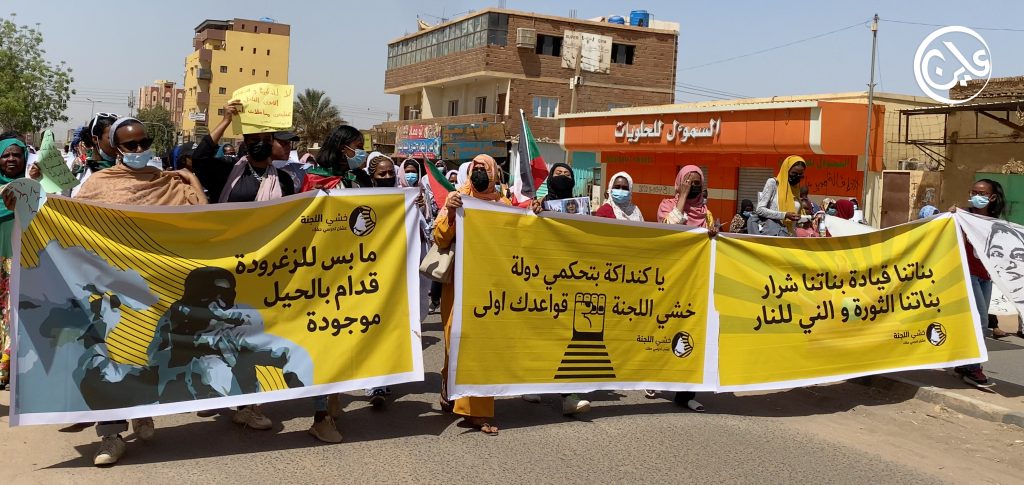 March 8: “Women’s Resilience” This protest focused on calls for greater rights and freedoms for Sudanese women. The main protest took place in Khartoum, but similar demonstrations took place in other major cities such as Kassala, Port Sudan, and Sennar. In Khartoum, a platform at Pashadar Station was set up for speeches, while protestors carried banners in support of women’s rights in Sudan with slogans such as: “Our daughters are leaders. Our daughters are revolution and fire”. The procession visited the Association of Tea and Food Vendors since Sudanese women working in the informal sector are routinely targeted by authorities, many victims to bribes and arrest by security forces under the formally active “Public Order Police”. “This year’s women’s procession worked on clear messages –the first of which is that the women of Sudan are at the heart of the political resistance to overthrow the military coup and build the next democracy,” protestor and feminist activist Winnie Omar said.
March 8: “Women’s Resilience” This protest focused on calls for greater rights and freedoms for Sudanese women. The main protest took place in Khartoum, but similar demonstrations took place in other major cities such as Kassala, Port Sudan, and Sennar. In Khartoum, a platform at Pashadar Station was set up for speeches, while protestors carried banners in support of women’s rights in Sudan with slogans such as: “Our daughters are leaders. Our daughters are revolution and fire”. The procession visited the Association of Tea and Food Vendors since Sudanese women working in the informal sector are routinely targeted by authorities, many victims to bribes and arrest by security forces under the formally active “Public Order Police”. “This year’s women’s procession worked on clear messages –the first of which is that the women of Sudan are at the heart of the political resistance to overthrow the military coup and build the next democracy,” protestor and feminist activist Winnie Omar said.
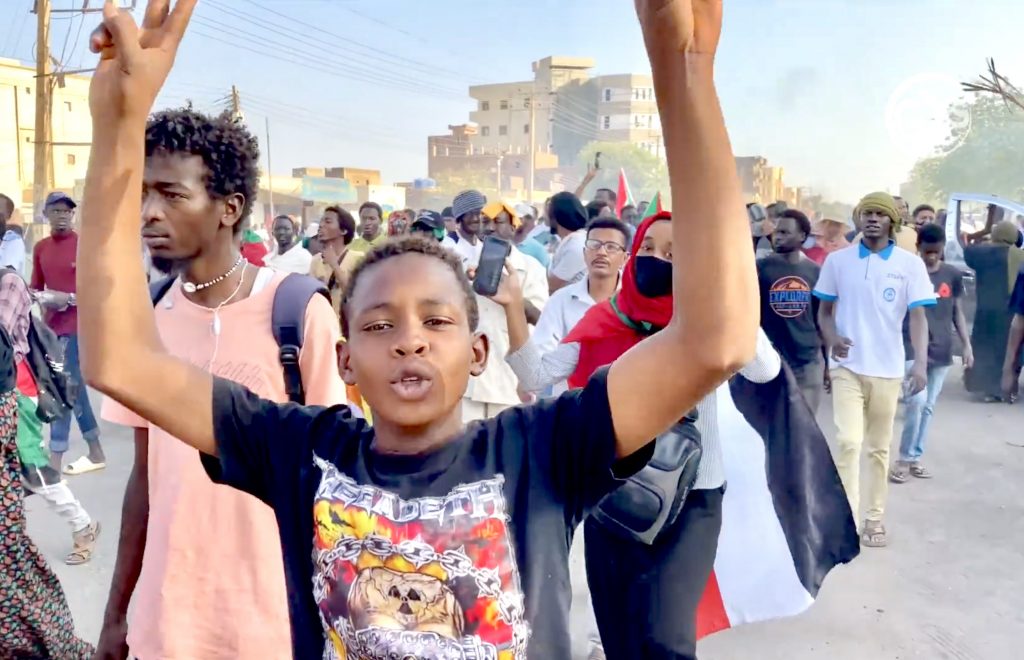 April 6: “The Earthquake” Resistance Committees coined the 6 April protest “the earthquake”, due to the high levels of participation. The committees called for a protest to take place on the anniversary of 6 April 2019 –a historic day marking the beginning of the sit-in that helped topple former president Omar al-Bashir. The high numbers of demonstrators were met by a volley of repressive measures used by the security forces – everything from tear gas and sound bombs to a more recent tactic of using cartridges. The cartridges fire a spray of pellets specifically designed to cause mass injuries and suppress the marches. The Central Committee of Sudanese Doctors (CCSD) confirmed the death of one protestor and at least 78 injured. The protest took place during the holy month of Ramadan, resistance committee members recall, whereby participants concluded the protest with a collective iftar (breaking the fast) in the evening.
April 6: “The Earthquake” Resistance Committees coined the 6 April protest “the earthquake”, due to the high levels of participation. The committees called for a protest to take place on the anniversary of 6 April 2019 –a historic day marking the beginning of the sit-in that helped topple former president Omar al-Bashir. The high numbers of demonstrators were met by a volley of repressive measures used by the security forces – everything from tear gas and sound bombs to a more recent tactic of using cartridges. The cartridges fire a spray of pellets specifically designed to cause mass injuries and suppress the marches. The Central Committee of Sudanese Doctors (CCSD) confirmed the death of one protestor and at least 78 injured. The protest took place during the holy month of Ramadan, resistance committee members recall, whereby participants concluded the protest with a collective iftar (breaking the fast) in the evening.
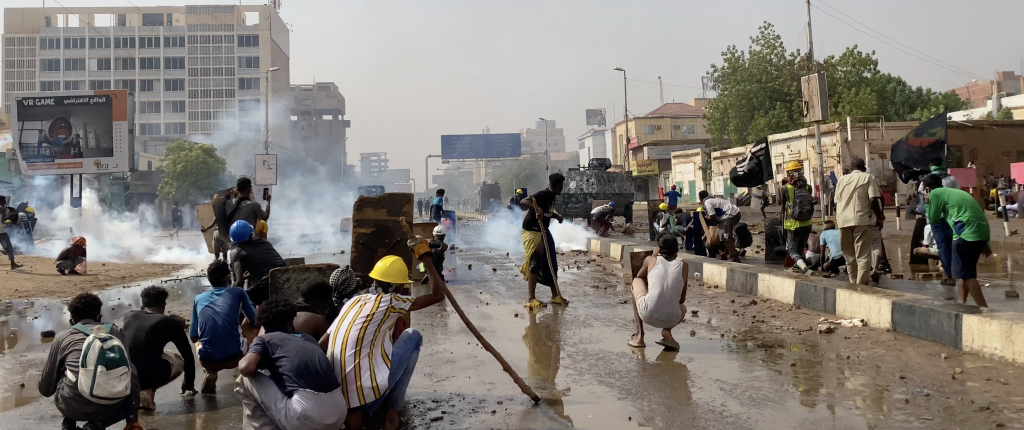 June 30: “March for the Martyrs” This demonstration commemorated protestors who died in previous protests. The streets of Khartoum were filled with protestors carrying flags and banners with images of protestors that had lost their lives while participating in the pro-democracy movement. Considered one of the larger turnouts, resistance committees also used new protest routes and tactics to evade the security forces. “The 30 June is a message with deep resonance stating that the revolutionary masses are an essential part of the political equation and the future of the country,” said the Khartoum resistance committee spokesman, Hossam Ali. “It is no longer possible to ignore the revolutionary forces.” Sadly, nine more protestors died and 629 were injured during this demonstration – six of these deaths occurred in Omdurman.
June 30: “March for the Martyrs” This demonstration commemorated protestors who died in previous protests. The streets of Khartoum were filled with protestors carrying flags and banners with images of protestors that had lost their lives while participating in the pro-democracy movement. Considered one of the larger turnouts, resistance committees also used new protest routes and tactics to evade the security forces. “The 30 June is a message with deep resonance stating that the revolutionary masses are an essential part of the political equation and the future of the country,” said the Khartoum resistance committee spokesman, Hossam Ali. “It is no longer possible to ignore the revolutionary forces.” Sadly, nine more protestors died and 629 were injured during this demonstration – six of these deaths occurred in Omdurman.
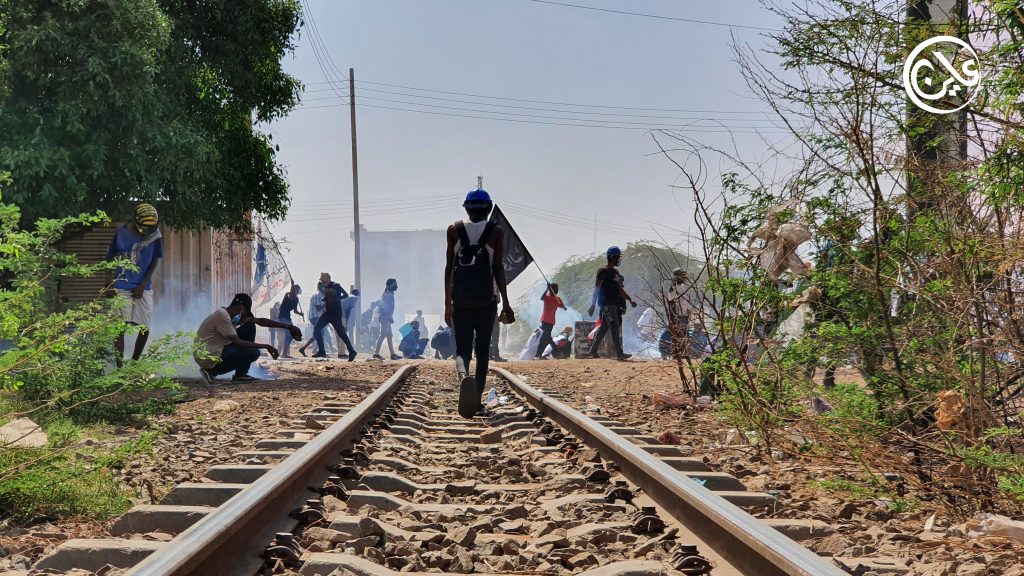 October 13: “People’s Authority” Demonstrators were able to reach the heart of the Arab market in central Khartoum, following new protest movement tactics used by the leaders of the resistance committees. Protestors carried banners calling for the “non-militarization of the judiciary” against the backdrop of the return of prosecutors and judges loyal to the former regime to the judiciary in the past months. The protest also coincided with unannounced talks between the political parties and the military leadership. Throughout the anti-coup protests, protestors have categorically rejected any negotiation and future political participation of the military. This protest called for support of the “Revolutionary Charter for the Establishment of People’s Authority,” a compendium of documents crafted earlier in the month by several resistance committees. The document is designed to start a new political process within the country.
October 13: “People’s Authority” Demonstrators were able to reach the heart of the Arab market in central Khartoum, following new protest movement tactics used by the leaders of the resistance committees. Protestors carried banners calling for the “non-militarization of the judiciary” against the backdrop of the return of prosecutors and judges loyal to the former regime to the judiciary in the past months. The protest also coincided with unannounced talks between the political parties and the military leadership. Throughout the anti-coup protests, protestors have categorically rejected any negotiation and future political participation of the military. This protest called for support of the “Revolutionary Charter for the Establishment of People’s Authority,” a compendium of documents crafted earlier in the month by several resistance committees. The document is designed to start a new political process within the country.
 October 25: “Coup’s anniversary” To mark one year of the pro-democracy movement’s struggle to end the coup and topple the military, tens of thousands of protestors took to the streets in the capital, along with major towns including: Atbara, El Fasher, Kosti, Nyala, and Wad Medani. In what observers considered the largest protest since the beginning of 2022, many resistance committee members said the protest revived considerable interest and energy in the pro-democracy movement. Authorities pre-empted the procession by closing all bridges in Khartoum to prevent protesters from the neighboring areas of Bahri and Omdurman from coalescing into the Khartoum procession. All roads leading to the army’s general command were also closed with concrete barriers. Security forces resorted to their usual brutal tactics to suppress the protestors. One demonstrator was killed in Omdurman after security forces ran him over in a vehicle, the Central Committee of Sudanese Doctors said, becoming the 119th person to be killed in the anti-coup protests. Medical sources estimate around 200 protestors were injured in the protest, adding to at least 7,000 cases of injuries by anti-coup demonstrators over the past 10 months. Despite this, protests continued in several neighbourhoods after 25 October 2022, indicating that the public struggle for the democratic rule has not dissipated in Sudan and remains set to continue.
October 25: “Coup’s anniversary” To mark one year of the pro-democracy movement’s struggle to end the coup and topple the military, tens of thousands of protestors took to the streets in the capital, along with major towns including: Atbara, El Fasher, Kosti, Nyala, and Wad Medani. In what observers considered the largest protest since the beginning of 2022, many resistance committee members said the protest revived considerable interest and energy in the pro-democracy movement. Authorities pre-empted the procession by closing all bridges in Khartoum to prevent protesters from the neighboring areas of Bahri and Omdurman from coalescing into the Khartoum procession. All roads leading to the army’s general command were also closed with concrete barriers. Security forces resorted to their usual brutal tactics to suppress the protestors. One demonstrator was killed in Omdurman after security forces ran him over in a vehicle, the Central Committee of Sudanese Doctors said, becoming the 119th person to be killed in the anti-coup protests. Medical sources estimate around 200 protestors were injured in the protest, adding to at least 7,000 cases of injuries by anti-coup demonstrators over the past 10 months. Despite this, protests continued in several neighbourhoods after 25 October 2022, indicating that the public struggle for the democratic rule has not dissipated in Sudan and remains set to continue.
Visit the Sudan Protest Monitor here: https://spm.3ayin.com



